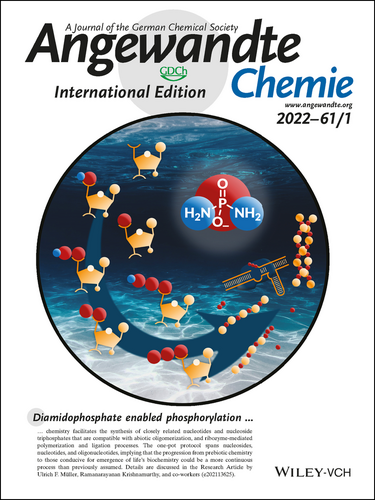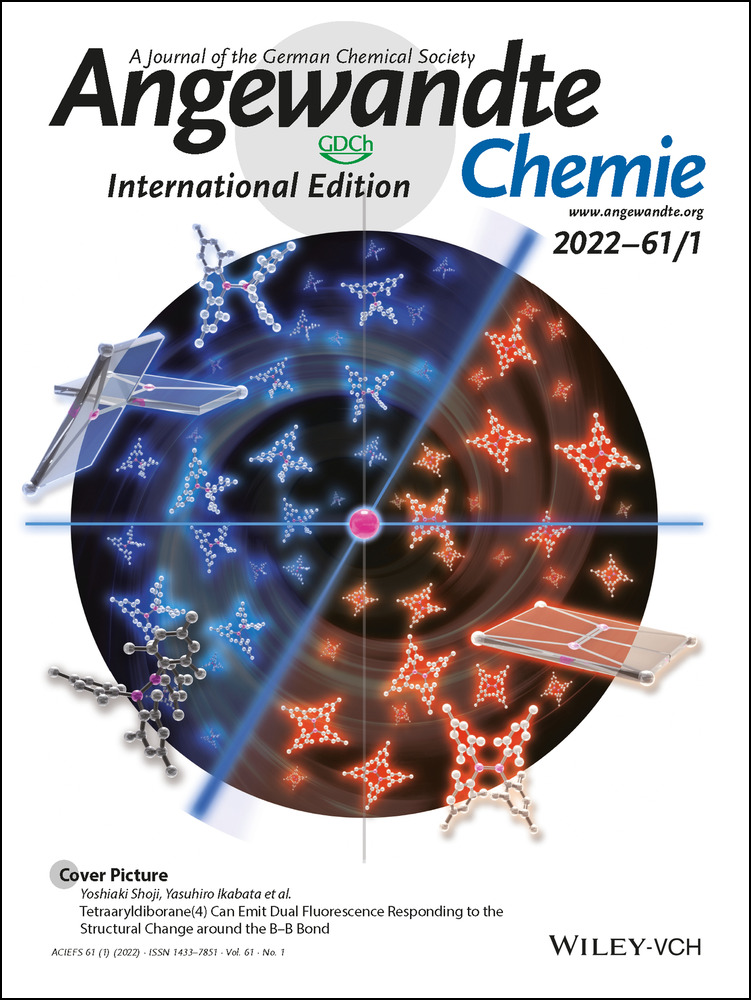Inside Back Cover: Concurrent Prebiotic Formation of Nucleoside-Amidophosphates and Nucleoside-Triphosphates Potentiates Transition from Abiotic to Biotic Polymerization (Angew. Chem. Int. Ed. 1/2022)
Graphical Abstract
Diamidophosphate enabled phosphorylation chemistry facilitates the synthesis of closely related nucleotides and nucleoside triphosphates that are compatible with abiotic oligomerization, and ribozyme-mediated polymerization and ligation processes. The one-pot protocol spans nucleosides, nucleotides, and oligonucleotides, implying that the progression from prebiotic chemistry to those conducive for emergence of life's biochemistry could be a more continuous process than previously assumed. Details are discussed in the Research Article by Ulrich F. Müller, Ramanarayanan Krishnamurthy, and co-workers (e202113625).





